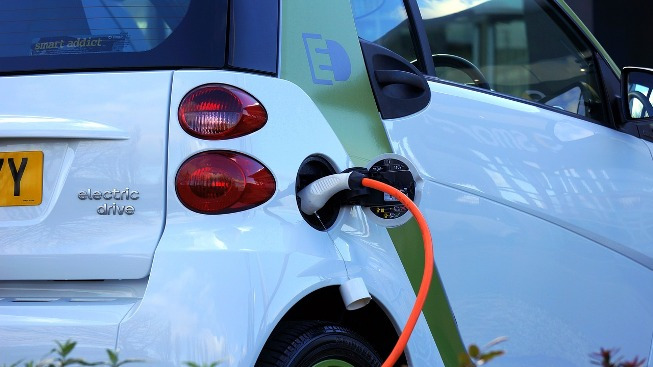By Nandini Sen Gupta
India’s automotive transition will happen from ICE (internal combustion engine) to hybrid vehicles to BEV (battery electric vehicles). This trend will be more visible in two-wheelers, three-wheelers and passenger vehicles while commercial vehicles, tractors and medium and heavy commercial vehicles (MHCVs) will take longer for the transition, says a survey for ACMA conducted by McKinsey & Co titled “Future of E-mobility.”
The survey was released at the 57th annual session of the Automotive Component Manufacturers Association of India (ACMA), the apex body of the auto component industry in India, in New Delhi on September 8.
The study reveals that globally, majority of experts believe that the auto industry will be disrupted with trends like shared mobility, autonomous driving, connectivity and electrification in our future vehicles.
These trends will have a major impact on the value chain, resulting in market shift and revenue pools. The role of OEMs and suppliers will fade by 2030, leading to an emergence of new players, gaining a significant share of revenues and profits of the automotive industry. The driving force towards this change in mobility will be collaboration and innovation with auto suppliers.
Vishvajit Sahay, joint secretary, department of heavy industries, Government of India, said, “The auto industry plays an important role in contributing to the country’s GDP where it contributes 7.1% and out of this auto component contributes 2.1% upwards. The Indian automotive industry is poised to change now. We need to view this change as an opening of new opportunities.”
“For this the industry needs to be not only technology-ready, but also capacity-ready. To be able to succeed in doing so we need to acquire & train the workforce while creating new avenues for skill development as well. The government expects the automobile industry to act as the prime contributor to the Make in India movement and is ready to support the industry in every possible manner,” he said
On the front of e-mobility Rattan Kapur, president, ACMA, said, “We at ACMA believe that while the future is electric, the logical progression would be to move from IC-engines to hybrids and then to fully battery based vehicles. This will provide the local industry with the opportunity to develop and best acquire technologies for the future generation of vehicles.”
“A long-term stable technology-agnostic roadmap for the automotive industry driven by a sound regulatory framework is therefore the need of the hour so that the industry can invest for sustainable growth and development, in line with the aspirations of all stakeholders,” he said.
“There is a fundamental need to preserve the environment for our future generations and are committed to it. For the auto component industry this may imply drastic changes for many individual players. Time has come for each of us in the industry to accept this new business environment and gear ourselves to cater to the new demands of the future,” Kapur added.
Commenting on the future of mobility, Abhay Firodia, president SIAM & chairman of Force Motors, said, “Today, we stand facing a massive technological transformation, which is coming our way. This leap towards e-mobility is bound to happen sooner or later, the correct way to do it would be a gradual transition. Policy environment should lead to the betterment of the nation and its customers. These new technologies already exist and are reasonably mature and can be implemented in a matter of few years but the industry needs clarity so that both OEMs and auto component manufacturers could plan for the change accordingly.”
In his keynote address, R C Bhargava, chairman, Maruti Suzuki India Ltd, said, “As the vehicle population is increasing, the need to import the crude oil is also increasing. Crude oil being a non-renewable resource is limited in nature, thereby, building a need to shift to a more sustainable and environment friendly alternative. It is in our government’s long-term interest to accept electric mobility as an alternate means of transport and we as an industry need to acknowledge the challenge to make it happen. However, there are a few challenges, which need to be addressed before we embark on the journey of electric mobility for India.”
“Firstly, battery is the main element of electric vehicles and it is the low cost of battery that will determine the sales of the vehicle, and secondly, the charging infrastructure should be available for the convenience of using the vehicle. The government of India is also strategising on an innovative idea of battery swapping which needs to be looked upon. To make this shift, we need to work together with the government and see what impact does the EV policy has on its customers in the future.”
The survey revealed that e-mobility is already shaping the automotive industry around the world and in India. On the dimension of innovation, the best should be extracted out of internal and external partnership sources.
Also, all stakeholders should work together to formulate policies that support indigenous development of technology over import dependence. The need of the hour is sustainability over speed.
In the case of India, four key forces could determine the future e-mobility landscape:
Regulations and incentives: Many countries have promoted e-mobility through a range of incentives, but these alone do not drive EV penetration. A supportive ecosystem that also establishes strict regulations on carbon emissions indirectly prompts the higher adoption of EVs.
Infrastructure: Easy and affordable access to charging infrastructure – both standard AC charging as well as rapid DC charging – is a key to meet customer needs.















